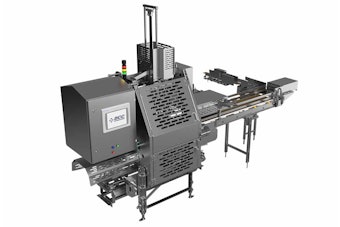
So, I just walked out of Ms. Lazenby’s Digital Media Arts class at JL Mann High School in Greenville, SC. It was my first time presenting to high school students, and I had an impactful and dynamic conversation that completely changed my mind about education, packaging, and the value of our industry.
Before I arrived at the school, I debriefed with my team—it’s been decades since I was in a high school. What should I share with the students? How do I define packaging as an industry? As a trade? A vocation? I wasn’t sure. My typical audience members are professionals, and I can talk all day about lifting sales with biometric research, strategic packaging design, and workflow building. But these topics would be a guaranteed sleeper in high school. So, I took my computer, preloaded 12 presentations, and took a handful of PackNotes.
I arrived, parked, buzzed in through a security door, signed some documents, and was greeted by Ms. Lazenby, who walked me to her classroom. The entire time I still had no idea what I was going to say. I was shuffled to the front of the room, and 20-some students sat in rows waiting to hear what I had to say.
So, I introduced myself, said I teach packaging science at Clemson University and have founded two businesses that operate in the city, and then I paused…now what? And then, it just came to me. I said, “That’s what I always wanted to do: create my own company and work with hundreds of talented people. It’s always been my dream.” Then I asked, “So what do you guys want to do? What industry do you see yourselves in?”
One brave student in the front raised her hand and said she wanted to get into the fashion industry. I asked her to expand on what she thought the fashion industry was, and she described it as—I don’t have the exact quote, but something close to—“developing beauty around things.” So, I responded with, “That’s exactly what a packaging designer does.” I then explained how every brand on the planet is trying to communicate beauty, fashion, and curiosity, and drive attention through their packaging.
The next thing that happened was a shock: All hands went up. Each student wanted to share what they were passionate about and find a way to connect it to a career—pharma, retail design, dentistry, engineering, product design, analytics and testing, and many more. I listened to each student carefully and then attempted to demonstrate how I firmly believe packaging is an important skill set to learn that not only complements what they want to do, but also:
- Enables students to get a seat in an interview for their “dream job”
- Complements just about any skill, industry, or lifestyle
- Provides a sustainable means of living
- Allows creative expression
- Empowers flexibility to live and work just about anywhere
I experienced a very rare thing: true interactions. And the process was super impactful for me as I think about how we should engage a burgeoning generation of packaging professionals.
Packaging is more than just an industry; it is a requirement for anyone and every company that distributes physical ideas. I founded PackagingSchool.com for this very reason: There is too much demand and too little supply of packaging knowledge. Students have to first be aware that packaging is a college major, and then they’ll have to reconfigure “the plan” to embark on this journey, which is fantastic, but only available in a few geographic areas of our country. So, my passionate, professional, and highly creative team invested years to develop an online solution to learn the craft and science of packaging anywhere, on any device, while studying any degree.
We need these folks. Our organizations need students who are passionate about design, finance, languages, art, communication, marketing, engineering, etc., and also have an empathy for packaging.
So what do you think? Will you hire one of these students, if they are a liberal arts major with a certificate in packaging? Let me know here.
Let me conclude with what really stuck with me from this experience. Ms. Lazenby sent me a follow-up e-mail with letters from the students. I distinctly recalled one student who, when I asked him to tell me what he wanted to do, said, “I don’t know, I’m lost.” In his letter back to me, he says, “Thanks to you, I may have found my career. For the past couple years I’ve been lost in what I want to do, but I think packaging is the closest I will get to doing what I want, realistically.”
I believe packaging is a connection point between the self and the career. Packaging is so prolific in our lives, we usually fail to notice it. But when we take a moment to think about it, it is the ideal starting career; we are all experts by being consumers. We can apply our ideas and beliefs around package development and grow into productive members of the workforce by moving packaging through our link in the supply chain. I completely missed this value. It’s why packaging is one of the top majors at Clemson: Students get jobs because every single company that distributes physical ideas needs a beautiful, well-designed, market-tested, artistic, properly communicated, correctly spec’d package. And there are students, liberal arts majors, who will be passionate about doing just this. The best thing you can do is be an advocate. Talk to kids about packaging…before they learn it on the streets.
Dr. R. Andrew Hurley is founder of Package Insight and The Packaging School.


























